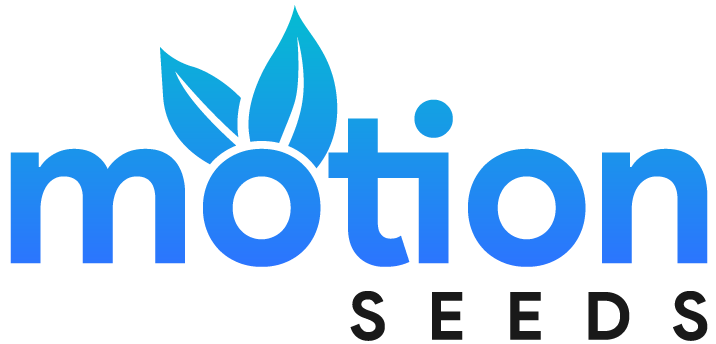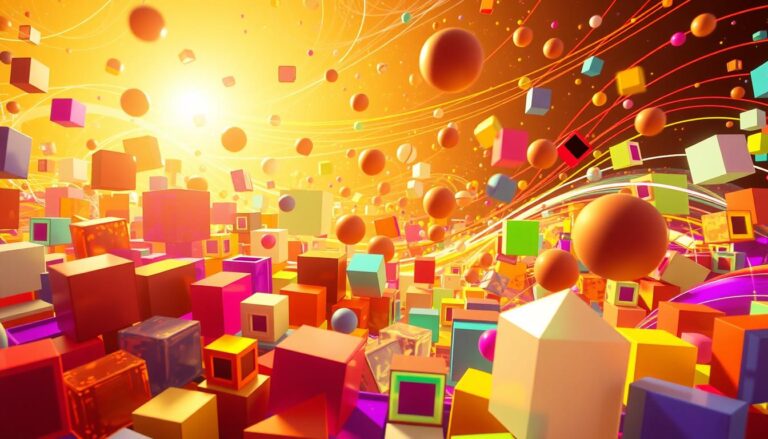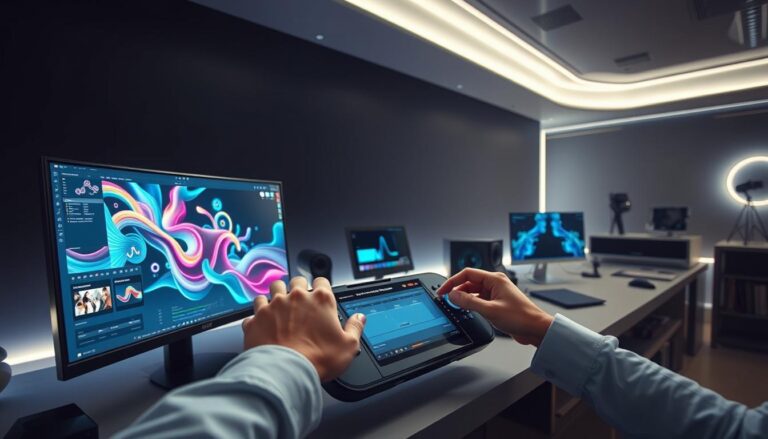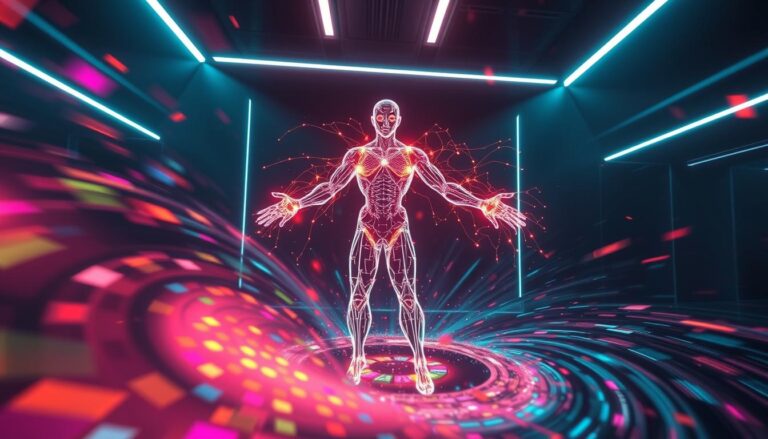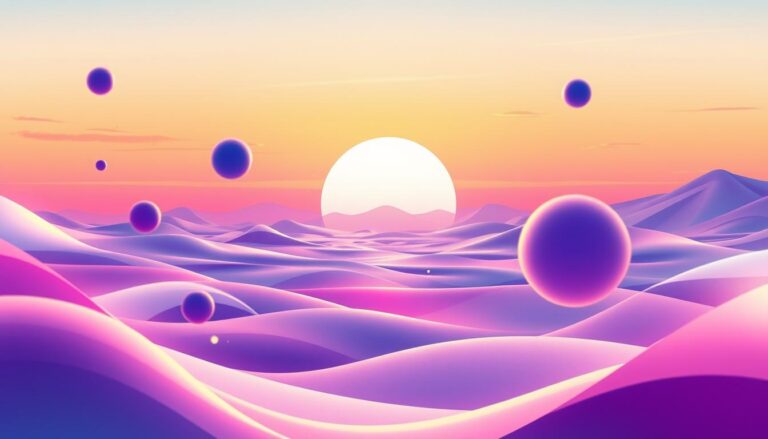Making cool animations and motion graphics needs the right software. The field has grown from old film titles to today’s social media ads. Choosing the best tools can change how you work and what you make.
Finding the right balance between cost and features is important. Some tools are great for pros, while others are perfect for beginners. Things like big files and working with a team also matter when choosing.
The best design apps make hard tasks easy. This lets you focus on being creative. Whether you work with video or images, good software is key.
Key Takeaways
- Motion graphics have expanded from films to digital media.
- The right tools improve efficiency and creativity.
- Budget and skill level influence software choices.
- Large files and teamwork require smart solutions.
- Both free and premium options have unique strengths.
Introduction to Motion Design Tools
Motion design tools have changed how we tell stories. From Saul and Elaine Bass’s work in 1955 to today’s ads, they’ve come a long way. The right software helps you be creative and work efficiently, whether you’re making 2D logos or 3D scenes.
Motion graphics have evolved a lot. They now use abstract shapes, dynamic lines, and fluid typography. The scene shows colorful, moving forms that seem to dance. It also has geometric patterns and a background that adds depth and light.
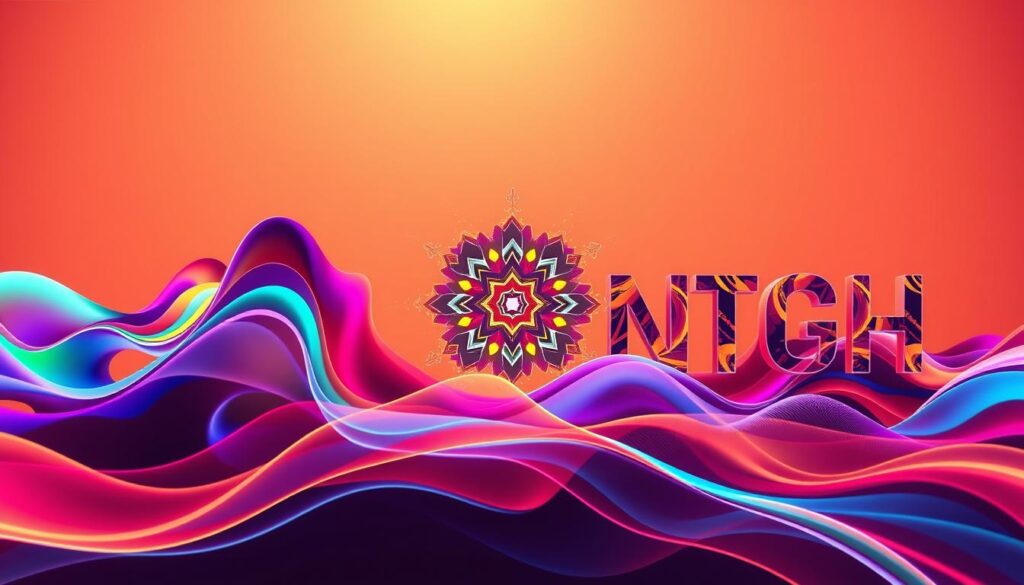
“Motion graphics are the marriage of graphic design and animation—a language of movement.”
From Analog to Digital: A Workflow Revolution
Early animators used hand-drawn frames and optical printers. Now, tools do the hard work for you, like tweening and rendering. This saves a lot of time.
| Aspect | Analog (Pre-1990s) | Digital (Today) |
| Production Time | Weeks per minute | Hours for polished output |
| Collaboration | Physical reels | Cloud-based sharing |
| Flexibility | Limited edits | Real-time adjustments |
Choosing Your Toolkit
Before picking software, ask these questions:
- Is your focus 2D or 3D design?
- Does it sync with Adobe Creative Cloud or other apps?
- What’s your budget—subscription-based or one-time purchase?
For teams, cloud platforms like Frame.io solve collaboration problems. They make big files transfer easy and feedback fast. Forums like Reddit’s r/MotionDesign help with tips and ideas.
Whether you work alone or with a team, the right tools make your work better. First, think about what you need for your project. Then, look for tools that fit your skills and ideas.
1. Adobe After Effects: The Industry Standard
Adobe After Effects is top for motion graphics pros. It's used in movies, TV, and ads. It mixes video and animations well. Its layer system and plugin support are unmatched for effects.
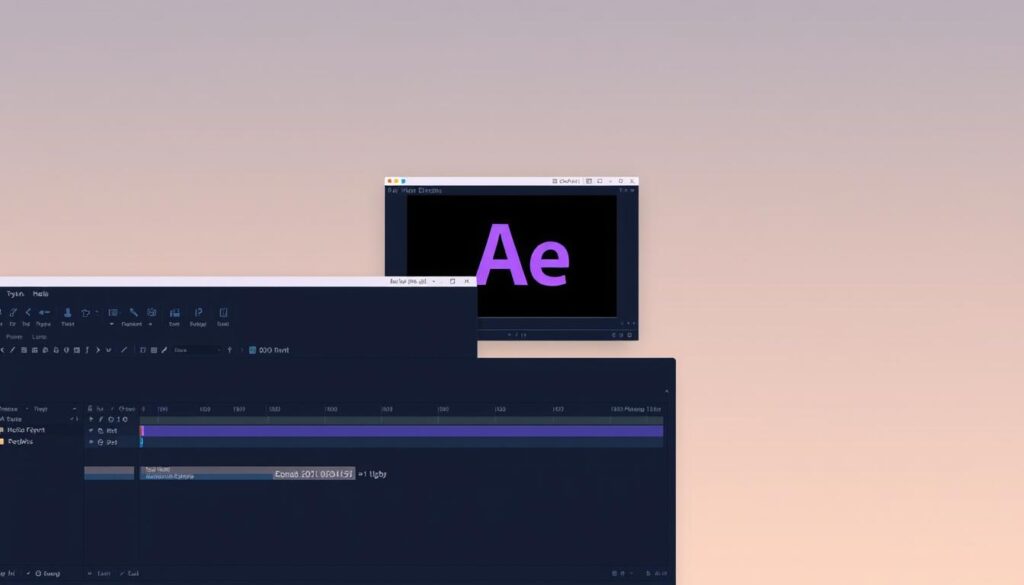
A simple, bright, and detailed picture of the Adobe After Effects user interface. The front shows the main area with a timeline, layers panel, and a preview window. It shows a 3D motion graphics animation.
The middle part has the top menu bar with tools and options. The background has a soft gradient, showing depth and focus on the software’s main parts. The whole picture shows the After Effects interface’s sleek, modern look, perfect for motion design.
Key Features
After Effects is great for:
- Keyframe animation: Smooth motion paths for objects.
- 3D compositing: Merging CGI with live-action footage.
- 12,000+ presets: Quick workflow with templates.
It works well with Adobe Creative Cloud, letting you share projects with Photoshop or Premiere Pro. The Puppet Tool makes character rigging easy for animations.
Pros and Cons
| Pros | Cons |
| 94% industry adoption | Steep learning curve |
| Trapcode Suite plugins | Expensive for freelancers ($22.99+/month) |
| Cloud collaboration | Requires powerful hardware |
Best Use Case
Ideal for video pros needing advanced VFX or marketing explainers. Social media animations look great with its preset libraries. For teams, cloud sharing makes design feedback smooth.
2. Blender: The Free Powerhouse
Blender is a game-changer, giving top-notch 3D modeling for free. It's a favorite for indie creators and studios. It's great for motion graphics, game design, and art.
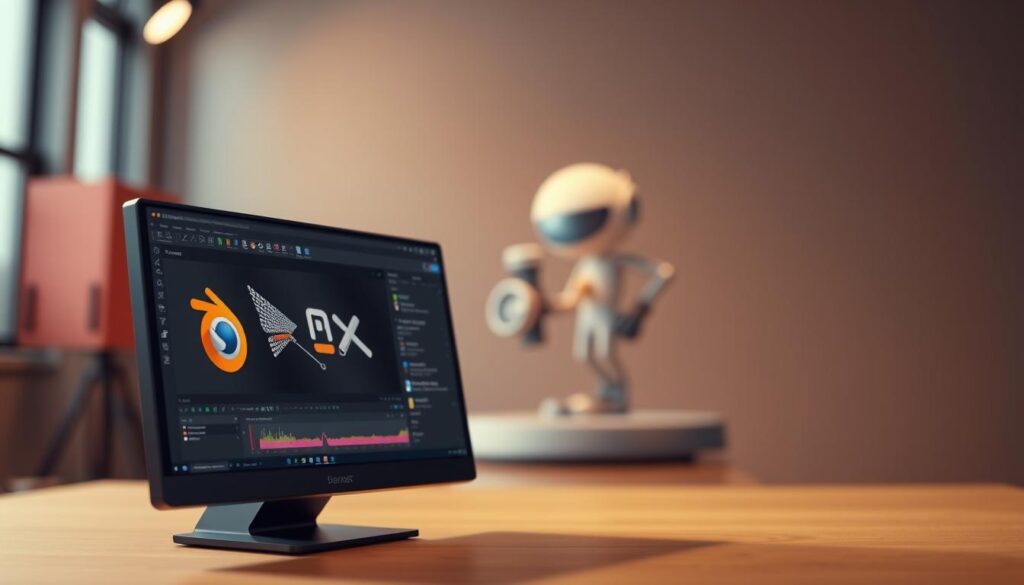
1. Blender: Free 3D Modeling and Animation
A sleek, three-dimensional Blender software interface is in the foreground. It shows off its powerful 3D modeling and animation tools. The design is clean and easy to use, showing Blender’s friendly nature.
In the middle, a detailed 3D model of a stylized character or object is shown. This shows Blender’s advanced 3D skills. The background is softly blurred, focusing on the software’s main features.
The scene is lit with a warm, professional light. This highlights the software’s versatility and appeal to motion designers.
Key Features
Blender’s toolkit surprises with depth:
- Grease Pencil: Draw 2D animations directly in 3D space.
- Cycles Render Engine: Photorealistic lighting for 3D models.
- Fluid Simulations: Craft lifelike liquid effects.
Geometry nodes enable procedural modeling, while sculpting tools refine textures. Over 300 free add-ons extend its functionality.
Pros and Cons
| Pros | Cons |
| Zero cost with open-source code | Fewer official tutorials |
| Active Reddit community (1M+ users) | Slower rendering than paid software |
| Cross-platform (Windows, macOS, Linux) | Steeper learning curve for advanced tools |
Best Use Case
Blender is great for startups making 3D models for demos or indie games. It’s perfect for hobbyists exploring motion graphics without spending money. Experimental artists use it for abstract animations with fluid sims.
3. Pencil2D: Simple and Free 2D Animation
Pencil2D is lightweight and easy to use. It focuses on hand-drawn animations, perfect for beginners or artists who like simple workflows. It's different from bigger software because it's all about frame-by-frame creativity.
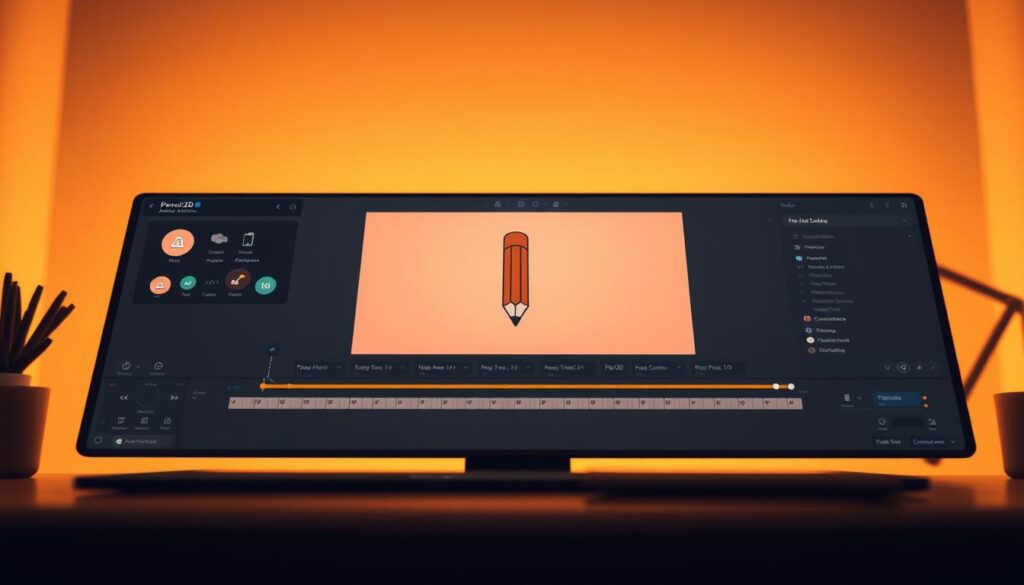
A close-up view of the Pencil2D animation software interface is shown. It has an intuitive layout and user-friendly tools. The workspace is lit with a warm, soft light, making it cozy and inviting.
In the foreground, the main timeline and animation preview window are highlighted. A stylized pencil icon is also shown. The middle ground has various customizable tools and menus for easy navigation.
In the background, a subtle gradient adds depth. Muted colors and clean lines give the scene a modern, minimalist look. This shows Pencil2D’s simplicity and accessibility, making it perfect for new motion designers.
Pros and Cons
| Pros | Cons |
| Zero cost, open-source | No audio support |
| Ideal for storyboards | Limited export formats (PNG, GIF) |
| Minimal learning curve | Lacks advanced design features |
Best Use Case
Pencil2D is great for indie comic animations or sketching storyboards. It’s easy to use, making it perfect for students learning 2D motion graphics. It’s not as powerful as After Effects, but it’s a good start for beginners.
4. Cinema4D: Professional 3D Motion Graphics
Cinema4D is top for 3D motion graphics. It’s used by ESPN and Netflix for their title sequences. It’s a bit pricey at $69.91/month (annual plan), but it’s worth it for studios wanting the best.
Key Features
Cinema4D’s MoGraph toolset makes complex animations easy. It has tools like Cloners and effectors for cool effects. Plus, Redshift makes rendering faster for better textures.
- Sound Effector: Syncs motion to audio beats.
- Intuitive UI: Faster workflow than Maya or Houdini.
- Broadcast-Ready: Used in 80% of TV graphics.
Pros and Cons
| Pros | Cons |
| Industry-standard for studios | Expensive for freelancers |
| Seamless Adobe After Effects sync | Requires high-end GPU/CPU |
| Active community (Cineversity tutorials) | Limited free learning resources |
Best Use Case
It’s perfect for agencies making product reveal videos or award-winning title sequences. Its collaboration features help teams work together. MoGraph turns ideas into real animations.
5. Canva: Easy and Accessible Design
Not everyone needs fancy tools to make great visuals. Canva makes design easy with its drag-and-drop interface. It’s great for small businesses and educators who want quick, professional content.
Key Features
Canva makes design easy with:
- 250K+ templates: Pre-made layouts for social media posts, presentations, and more.
- Brand kits: Save colors and fonts for consistent marketing materials.
- Animated text: Simple motion effects without timeline editing.
The cloud-based platform works well on web and mobile. It has team features for real time collaboration.
Pros and Cons
| Pros | Cons |
| Master basics in 10 minutes | No advanced animation controls |
| Free plan available | Watermarks on free downloads |
| Huge library of stock images | Limited export resolution |
Best Use Case
Great for entrepreneurs and teachers. The Pro plan ($12.99/month) offers premium assets for social media projects. It’s a good choice when you’re short on time.
Conclusion: Choosing the Right Tools for Your Needs
First, know what you need. Canva is fast for social media. Cinema4D is top for 3D motion graphics. Try free tools like Blender or Pencil2D first.
Use a mix of tools to save time. Sketch in Canva, then refine in After Effects. Cloud platforms like LucidLink help teams work together.
Join communities like Reddit’s r/MotionDesign for tips and ideas. The right tools make your projects come to life. Start simple, grow smart.
FAQ
What is the best software for beginners in motion design?
Adobe After Effects is a great start. It’s powerful yet easy for newbies. Blender is a free choice for 3D.
Can I create professional animations without spending money?
Yes! Blender and Pencil2D are free and professional. Many studios use Blender for big projects.
How does Cinema4D compare to Blender for 3D motion graphics?
Cinema4D is easier to use and works well with After Effects. Blender is free but harder to learn.
Is Canva suitable for complex motion graphics projects?
Canva is good for simple animations and social media. But it’s not for complex motion graphics. It’s best for quick designs.
What hardware do I need to run these programs smoothly?
After Effects and Cinema4D need strong CPU and GPU. Blender is demanding for 3D. Pencil2D and Canva work on most computers.
Can these tools be used for game development animations?
Blender is great for game assets and animations. After Effects is better for cutscenes and UI animations.
